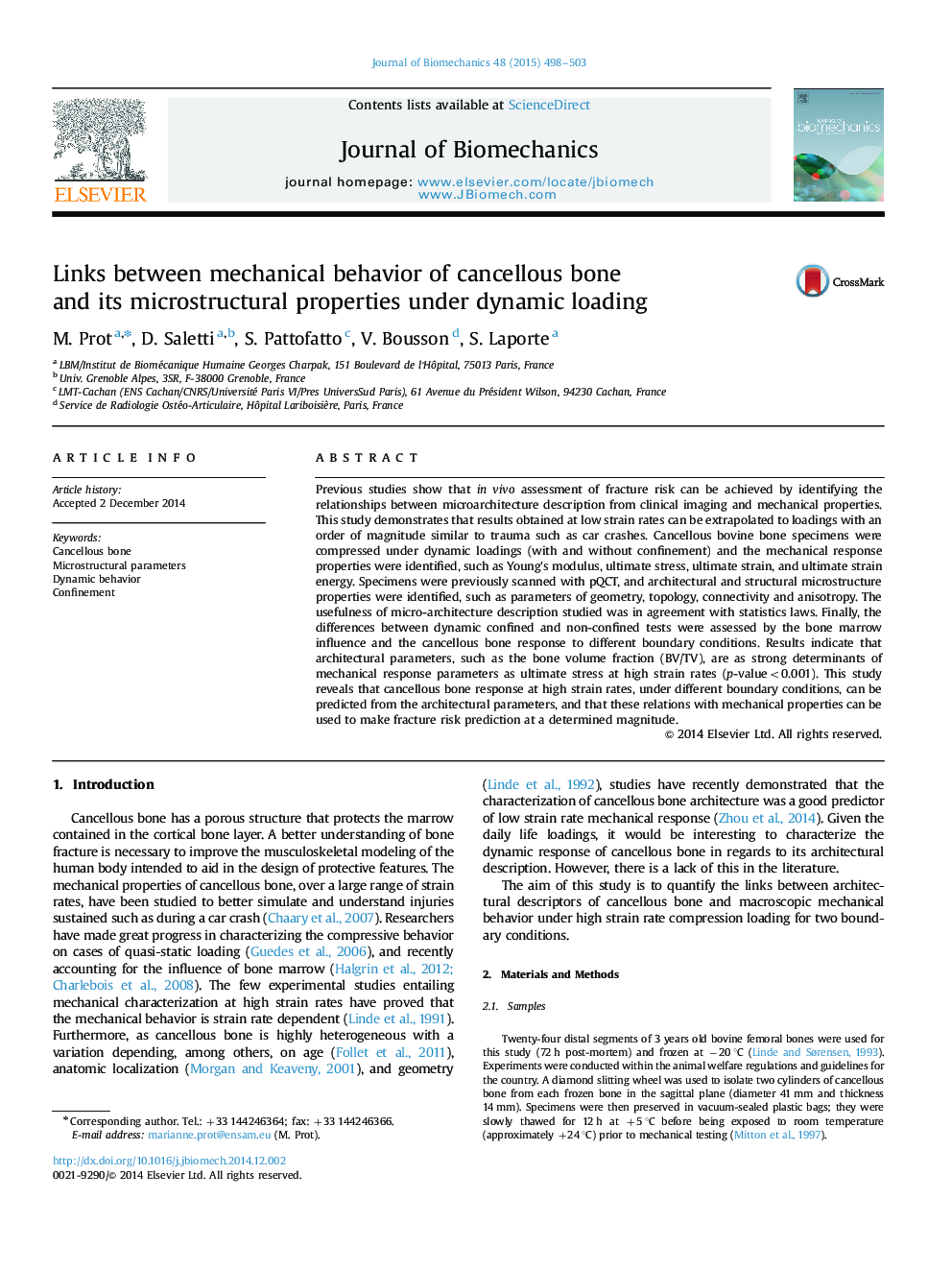| Article ID | Journal | Published Year | Pages | File Type |
|---|---|---|---|---|
| 10431218 | Journal of Biomechanics | 2015 | 6 Pages |
Abstract
Previous studies show that in vivo assessment of fracture risk can be achieved by identifying the relationships between microarchitecture description from clinical imaging and mechanical properties. This study demonstrates that results obtained at low strain rates can be extrapolated to loadings with an order of magnitude similar to trauma such as car crashes. Cancellous bovine bone specimens were compressed under dynamic loadings (with and without confinement) and the mechanical response properties were identified, such as Young׳s modulus, ultimate stress, ultimate strain, and ultimate strain energy. Specimens were previously scanned with pQCT, and architectural and structural microstructure properties were identified, such as parameters of geometry, topology, connectivity and anisotropy. The usefulness of micro-architecture description studied was in agreement with statistics laws. Finally, the differences between dynamic confined and non-confined tests were assessed by the bone marrow influence and the cancellous bone response to different boundary conditions. Results indicate that architectural parameters, such as the bone volume fraction (BV/TV), are as strong determinants of mechanical response parameters as ultimate stress at high strain rates (p-value<0.001). This study reveals that cancellous bone response at high strain rates, under different boundary conditions, can be predicted from the architectural parameters, and that these relations with mechanical properties can be used to make fracture risk prediction at a determined magnitude.
Related Topics
Physical Sciences and Engineering
Engineering
Biomedical Engineering
Authors
M. Prot, D. Saletti, S. Pattofatto, V. Bousson, S. Laporte,
